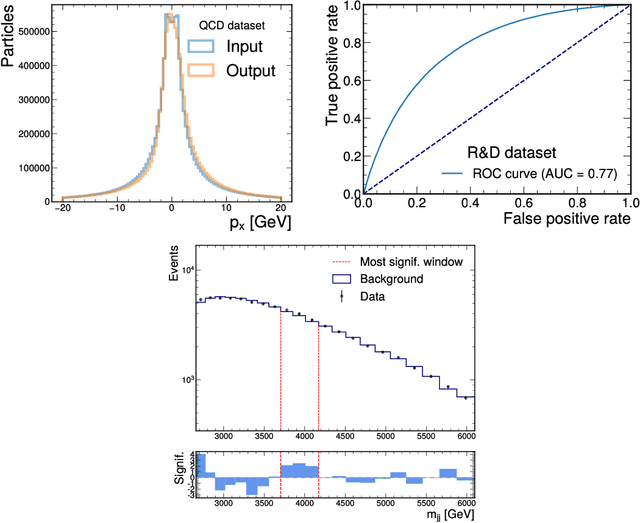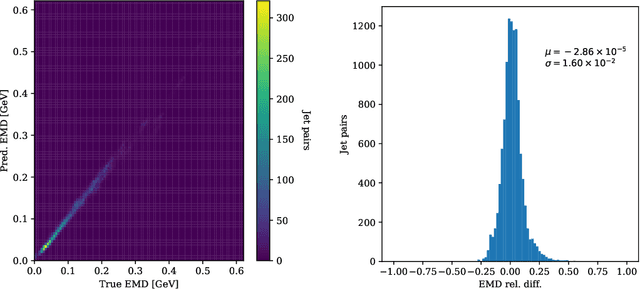Steven Tsan
Induced Generative Adversarial Particle Transformers
Dec 08, 2023Abstract:In high energy physics (HEP), machine learning methods have emerged as an effective way to accurately simulate particle collisions at the Large Hadron Collider (LHC). The message-passing generative adversarial network (MPGAN) was the first model to simulate collisions as point, or ``particle'', clouds, with state-of-the-art results, but suffered from quadratic time complexity. Recently, generative adversarial particle transformers (GAPTs) were introduced to address this drawback; however, results did not surpass MPGAN. We introduce induced GAPT (iGAPT) which, by integrating ``induced particle-attention blocks'' and conditioning on global jet attributes, not only offers linear time complexity but is also able to capture intricate jet substructure, surpassing MPGAN in many metrics. Our experiments demonstrate the potential of iGAPT to simulate complex HEP data accurately and efficiently.
Particle Graph Autoencoders and Differentiable, Learned Energy Mover's Distance
Nov 24, 2021

Abstract:Autoencoders have useful applications in high energy physics in anomaly detection, particularly for jets - collimated showers of particles produced in collisions such as those at the CERN Large Hadron Collider. We explore the use of graph-based autoencoders, which operate on jets in their "particle cloud" representations and can leverage the interdependencies among the particles within a jet, for such tasks. Additionally, we develop a differentiable approximation to the energy mover's distance via a graph neural network, which may subsequently be used as a reconstruction loss function for autoencoders.
 Add to Chrome
Add to Chrome Add to Firefox
Add to Firefox Add to Edge
Add to Edge